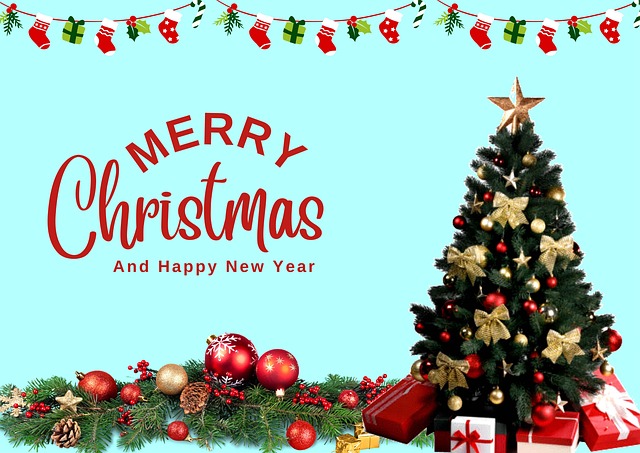Optimizing Scientific Posters for UK Audiences: Translation Strategies and Cultural Sensitivity
Effective scientific communication in the UK requires a nuanced approach that considers cultural context and linguistic heritage. Translation services are vital for making scientific posters accessible and engaging, bridging gaps between complex idea…….

Effective scientific communication in the UK requires a nuanced approach that considers cultural context and linguistic heritage. Translation services are vital for making scientific posters accessible and engaging, bridging gaps between complex ideas and diverse audiences. By balancing clarity with cultural relevance, these services ensure research reaches a broader spectrum of attendees at UK conferences and local journal publications, fostering better understanding and engagement within the scientific community. Specialized translation expertise tailored to UK audiences is key in creating captivating, culturally sensitive, and scientifically accurate posters that enhance global scientific discourse.
Are your scientific posters resonating with UK audiences? Effective communication in a new cultural context can be challenging, especially in a country with diverse linguistic and visual preferences. This article explores the nuances of creating accessible scientific posters for the UK market. We delve into the importance of clarity, navigate design challenges, and uncover the role of translation services. Through key considerations and best practices, learn how to create culturally responsive posters that truly engage UK audiences. Discover successful case studies showcasing effective translations in action.
- Understanding Cultural Nuances of Scientific Communication in the UK
- The Importance of Clarity and Accessibility in Scientific Posters
- Challenges of Effective Scientific Poster Design for UK Audiences
- Role of Translation Services in Enhancing Scientific Posters
- Key Considerations for Translating Scientific Content for UK Market
- Best Practices for Creating Culturally Responsive Scientific Posters
- Case Studies: Successful Translations of Scientific Posters for UK Events
Understanding Cultural Nuances of Scientific Communication in the UK

Effective scientific communication goes beyond just presenting data; it involves understanding the cultural context in which the message is conveyed. The UK, with its diverse audience and rich linguistic heritage, requires a tailored approach to ensure scientific posters are accessible and engaging for all viewers. Cultural nuances play a significant role in how information is interpreted, especially when it comes to visual aids like posters. What may be clear and compelling in one culture could potentially be misunderstood or missed entirely in another.
Translation services for UK scientific posters are an essential tool to bridge this gap. Professional translation ensures that the intended meaning of the poster, from its graphical elements to textual content, is accurately conveyed. This is crucial as scientific topics often involve specialized terminology and complex ideas that require precise rendering in the target language. By leveraging translation services, researchers and communicators can ensure their messages resonate with UK audiences, fostering better understanding and engagement within the scientific community and beyond.
The Importance of Clarity and Accessibility in Scientific Posters

Scientific posters are a powerful tool for sharing research findings and engaging audiences, especially at conferences and academic gatherings. For researchers presenting their work to UK audiences, ensuring clarity and accessibility is paramount. The UK market has a diverse range of visitors, including experts from various scientific backgrounds and laypeople with varying levels of specialist knowledge.
A well-designed scientific poster should effectively convey complex information in a simple, visual format. This involves using clear language, concise bullet points, and high-quality visuals. Engaging the audience’s interest while ensuring they can quickly grasp key messages is essential. Translation services for UK scientific posters play a vital role here, as they help researchers reach a broader, more diverse audience by providing accurate and culturally sensitive interpretations of their work, making it accessible to all attendees regardless of their language proficiency.
Challenges of Effective Scientific Poster Design for UK Audiences

Creating a scientific poster tailored for a UK audience requires careful consideration due to language and cultural nuances. While the core science remains consistent, effective communication demands translating complex ideas into clear, accessible English. Professional translation services play a vital role here, ensuring that every word resonates with British readers, avoiding misinterpretations or confusion.
Challenges arise from diverse regional accents and dialects within the UK, requiring translations that transcend mere word-for-word substitutions. The poster’s design also matters; visual elements, graphs, and diagrams must be adapted for familiarity and comprehension. This process demands cultural sensitivity to create a visually appealing and scientifically accurate poster that captivates UK audiences.
Role of Translation Services in Enhancing Scientific Posters

In today’s global scientific community, effective communication is key to sharing research findings and fostering collaboration. For researchers presenting at UK events or seeking publication in local journals, ensuring your scientific posters are accessible and engaging for a UK audience is essential. This is where translation services play a vital role.
Professional translation services specializing in scientific content can significantly enhance the impact of your posters. They provide accurate interpretations, adapting complex research concepts to simple, understandable language suitable for a broad UK audience. Moreover, these services can also ensure cultural relevance, reflecting local idioms and references that might enhance engagement and make your poster more memorable. By leveraging translation services, researchers can overcome language barriers, making their work truly accessible and contributing to the overall scientific discourse in the UK.
Key Considerations for Translating Scientific Content for UK Market

When translating scientific content for a UK audience, several key considerations come into play to ensure clarity and effective communication. The process involves more than just word-for-word substitutions; it requires a deep understanding of both the science and the cultural nuances of the target market. One critical aspect is tailoring the language to be accessible to a general UK audience, avoiding overly technical jargon that might confuse readers outside of specialized fields.
Translation services for UK scientific posters should also pay close attention to formatting and design elements. This includes ensuring that diagrams, charts, and graphs are properly labeled and easy to interpret in the new context. Additionally, considering regional variations in terminology can significantly enhance the poster’s impact. For instance, using commonly accepted UK terms for scientific concepts will make the content more relatable and engaging for the intended audience.
Best Practices for Creating Culturally Responsive Scientific Posters

Creating a scientific poster that resonates with a UK audience requires a thoughtful, culturally responsive approach. It’s essential to remember that audiences from diverse backgrounds interpret information differently. Therefore, avoiding technical jargon and using clear, accessible language is paramount. Visuals play a significant role; incorporate diagrams and infographics that are easy to understand, ensuring complex data doesn’t overwhelm the viewer. Translation services for UK scientific posters can be invaluable in this regard, as they guarantee your message is accurately conveyed to a broader, more inclusive audience.
When designing your poster, consider cultural nuances and historical context. Steer clear of stereotypes or imagery that may offend. Instead, opt for visuals that reflect the UK’s multicultural fabric. This might involve using symbols, colors, or motifs that are universally recognized or hold significance for various ethnic groups within the country. By embracing these best practices, you’ll not only enhance the clarity of your scientific poster but also foster a deeper connection with your UK audience.
Case Studies: Successful Translations of Scientific Posters for UK Events

When presenting scientific research at UK events, ensuring your posters are clear and accessible is vital. Case studies demonstrate the successful translation of international scientific posters for UK audiences. One notable example involves a biotechnology firm that adapted their global poster for a local conference. The key difference was not just linguistic but also visual – using familiar icons and graphs relevant to the British context significantly enhanced comprehension. This strategy proved effective, as attendees reported better understanding of the research compared to previous international events.
Another successful translation involved a collaboration between researchers from Europe and the UK. They utilized professional translation services specializing in scientific content, ensuring terminological consistency and accuracy across languages. The translated poster maintained its original layout and design while seamlessly incorporating local references and units of measurement. This approach not only facilitated communication but also fostered cultural exchange, demonstrating the power of effective scientific communication in a multilingual setting.
When presenting scientific research, ensuring your posters are clear and accessible is paramount. Understanding the cultural nuances of communication in the UK and adopting best practices for translation can significantly enhance engagement at events and conferences. By incorporating these guidelines and leveraging translation services tailored to the UK market, scientists can create impactful posters that resonate with diverse audiences, fostering effective knowledge exchange and contributing to the advancement of science within the UK scientific landscape. Translation services for UK scientific posters play a vital role in breaking down language barriers and promoting inclusivity.






